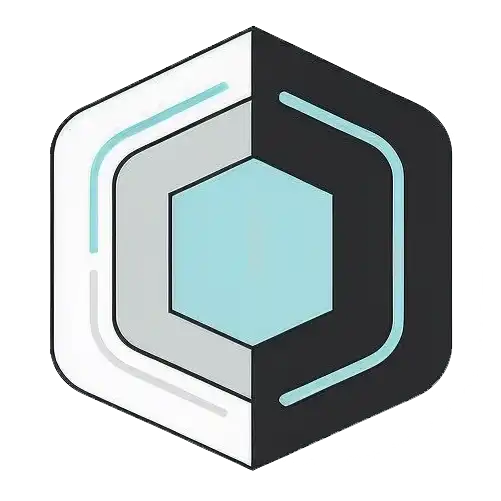Sunday 12 January 2025, 09:41 AM
How usability testing improves user experience
Usability testing uses real users to ensure products are easy to use, identifying issues early to improve satisfaction, save resources, and enhance quality.
Unlocking better user experiences through usability testing
Ever tried using an app or website and felt completely lost? You're not alone. We've all been there, scratching our heads and wondering, "Who designed this?" That's where usability testing comes into play. It's like giving your product a friendly check-up to make sure it's easy to use. Let's dive into how usability testing can transform user experiences from frustrating to fantastic.
Understanding usability testing
First things first, what exactly is usability testing? In simple terms, it's a method used to evaluate how easy a product is to use by testing it with real users. These users perform specific tasks while observers note any hiccups or areas of confusion. The goal? To identify usability problems, collect qualitative and quantitative data, and determine the participants' satisfaction with the product.
Why usability testing matters
You might be thinking, "My product works fine; why bother testing?" Well, usability isn't just about functionality. It's about how intuitive and enjoyable your product is for the people using it. A product that's tough to navigate can push users away, no matter how great its features are.
Consider this: users have countless options at their fingertips. If your app or website isn't user-friendly, they're likely to jump ship and find one that is. Usability testing helps ensure your product meets user expectations and keeps them coming back.
Key benefits of usability testing
So, what are the perks of investing time and resources into usability testing? Let's break it down.
Improves user satisfaction
When users find your product easy to use, they're happier. Happy users are more likely to continue using your product, recommend it to others, and become loyal customers.
Identifies hidden issues
Usability testing can uncover problems that might not be apparent to the development team. Maybe a button isn't where users expect it to be, or perhaps the navigation menu is confusing. Real users provide fresh eyes and perspectives.
Saves time and money
Finding and fixing issues early in the development process is much cheaper than after launch. Usability testing helps catch problems before they become costly fixes or harm your product's reputation.
Enhances product quality
Continuous testing and refining lead to a superior product. By iteratively improving usability, you ensure your product meets high standards and stands out in the market.
How to conduct usability testing
Ready to get started with usability testing? Here's a simple roadmap to guide you through the process.
Define clear objectives
What do you want to learn from your testing? Are you looking to improve navigation, understand user behaviors, or test specific features? Setting clear goals will focus your efforts.
Recruit the right participants
Your testers should represent your target audience. Consider demographics, tech-savviness, and any other relevant characteristics. The aim is to observe typical users interacting with your product.
Develop tasks for participants
Create realistic scenarios and tasks for users to complete. These should reflect common actions a user would take. For example, "Find and purchase a pair of running shoes in your size."
Choose a testing method
Decide between in-person or remote testing. In-person allows for more observation of body language and immediate feedback, while remote testing can be more convenient and less intimidating for participants.
Observe and record
Watch how participants interact with your product. Take notes on where they stumble or get frustrated. Recording sessions (with permission) can be helpful for later analysis.
Analyze the data
Look for patterns in the issues encountered. Are multiple users struggling with the same task? Prioritize these problems for fixing.
Implement improvements
Work with your development team to address the issues found. Once changes are made, consider conducting another round of testing to ensure the problems have been resolved.
Common challenges and solutions
Usability testing isn't without its hurdles. Here are some common challenges and how to tackle them.
Limited resources
Not everyone has a big budget or team. If resources are tight, consider guerrilla testing. This involves quick, informal tests with people in your target audience, like at a coffee shop or online forums.
Biased feedback
It's easy to unintentionally lead participants or influence their feedback. To avoid this, use neutral language, and don't prompt users unless necessary. Let them navigate organically.
Participant recruitment
Finding the right participants can be tough. Utilize social media, professional networks, or user panels to find individuals who match your target user profile.
Overanalyzing data
With loads of data, it's tempting to fixate on every detail. Focus on the most significant issues that impact usability. Prioritize fixes that will make the biggest difference to the user experience.
Real-world impact of usability testing
Still not convinced? Let's look at how usability testing has made a real difference for some well-known products.
Example: Improving an e-commerce checkout process
An online retailer noticed a high cart abandonment rate. Through usability testing, they discovered users were frustrated by a lengthy checkout process requiring account creation. By simplifying the process and allowing guest checkouts, they significantly increased completed purchases.
Example: Enhancing mobile app navigation
A fitness app received complaints about its complicated navigation. Usability testing revealed users couldn't find essential features easily. The app designers reorganized the menu structure based on user feedback, leading to higher user engagement and positive reviews.
Tips for effective usability testing
To get the most out of your usability testing, consider these additional tips.
Start early and test often
Don't wait until your product is fully developed. Early testing can catch fundamental issues before they're baked into the design. Regular testing throughout development ensures continuous improvement.
Keep an open mind
Be prepared for feedback that challenges your assumptions. Remember, the goal is to make the product better for the user, not to validate existing designs.
Collaborate with your team
Share findings with your entire team, including designers, developers, and stakeholders. Collaborative efforts lead to more cohesive improvements.
Respect your participants
Appreciate the time and insights your testers provide. Ensure their comfort during the process, and consider offering incentives for their participation.
The future of usability testing
As technology evolves, so do the methods and tools for usability testing. With advancements like AI and virtual reality, testing is becoming more sophisticated and accessible.
Remote and automated testing
Tools now allow for remote usability testing, broadening the pool of participants. Automated testing can handle repetitive tasks, freeing up time to focus on more complex issues.
Personalized user experiences
Usability testing is starting to incorporate personalization, recognizing that users have diverse needs and preferences. Testing can help tailor experiences to different user segments.
Final thoughts
Usability testing is more than just a checkbox in the development process; it's a vital practice that puts the user at the heart of your product. By taking the time to understand how real users interact with your creation, you can make informed decisions that enhance satisfaction and loyalty.
Remember, a product that's a joy to use doesn't happen by accident. It takes effort, empathy, and a willingness to listen and adapt. So go ahead, embrace usability testing, and unlock the full potential of your user experience.

